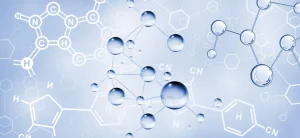Structural analysis and application of surfactants
1.Why study surfactants?
With the rapid development of petrochemical industry, it provides abundant raw materials for the synthesis of surfactants, and its output and varieties grow rapidly, becoming one of the basic industries of national economy.
Surfactants play a great role in improving the production process, improving product quality, reducing costs, saving energy, increasing productivity, increasing added value, and so on, and are therefore known as “industrial monosodium glutamate” and “industrial catalyst”. The application field extends from daily-use chemical industry to food, agriculture, environmental protection, medicine, petroleum processing, mining and other production and technology fields.

2.Introduction to surfactants
2)Classified by molecular weight
3)Categorized by application
3. Structure and function of common surfactants
1、Nonionic surfactants
They are called nonionic surfactants because they do not ionize into ionic state in aqueous solution, but exist in solution in molecular or micellar state. Most of these surfactants are in liquid and slurry state, and their solubility in water decreases with increasing temperature.
According to the different structure of hydrophilic group, it mainly includes:
Polyoxyethylene type (the most varieties, the largest production, the most important status, the most promising development)

Polyol type, alkyl alcohol amide type
Polyether type, oxidized amine type
(1) Polyoxyethylene ether Polyoxyethylene nonionic surfactants are mainly composed of ethylene oxide (EO) and hydrophobic compounds containing active hydrogen atoms, and are combined into various lengths as needed, and their hydrophilicity is provided by polyoxyethylene. Its hydrophilicity is provided by the polyoxyethylene group. The more oxygen vinyl groups are combined, the better the water solubility.
A. Long-chain fatty alcohol polyoxyethylene ether:
Characteristics: (Take Ping Pinga as an example)
Milky white (beige) color ointment, solid when molecular weight is high;
Easily soluble in water, ethanol, etc., 1% aqueous solution PH value is neutral;
Resistant to acid, alkali, hard water, heat and heavy metal salts;
It has strong leveling, retarding, penetrating and diffusing properties for dyestuffs.
It can be used with all kinds of surface activity and dyestuffs;

O-9, O-10, O-15, O-20, O-25, O-35, O-35.
B. Alkyl phenol ethoxylates (APEO):
Characteristics:
High chemical stability (not easy to be destroyed by strong acid and alkali even at high temperature), can be used in metal pickling solution and strong alkaline detergent;
Has good wetting, penetration, emulsification, dispersion, solubilization and washing effect, widely used in detergents, personal care of daily-use chemicals, textiles, paper, petroleum, metallurgy, pesticides, pharmaceuticals, printing, synthetic rubber, synthetic resins, plastics and other industries
Disadvantages: difficult biodegradation
2)Polyol type
Polyol-type nonionic surfactant refers to the esters generated by the esterification of polyols containing multiple hydroxyl groups with fatty acids; in addition, it also includes nonionic surfactants produced by the reaction of amino alcohols with NH2 or NH groups, and sugars with -CHO groups with fatty acids or esters.
2, cationic (quaternary ammonium salt type) surfactants
Definition: quaternary ammonium salts with hydrophobic groups directly attached to nitrogen atoms, containing an ionized nitrogen atom is an important symbol.
General properties with surface activity
Quaternary ammonium salt solution has strong bactericidal ability, so it is often used in disinfection and sterilization.
Quaternary ammonium cationic surfactants also have good adsorption, thickening and emulsification effect is obvious, by the industrial sector is widely valued.
Commonly used varieties are benzalkonium chloride (cleaner) and benzalkonium bromide (new cleaner) and so on.
Preparation:
Using stearic acid, oleic acid and other cheap fatty acids and low-grade amine reaction can be a good quaternary ammonium salt type of surface activity.
Translated with DeepL.com (free version)
![DMAEE CAS1704-62-7 2-[2-(Dimethylamino)ethoxy]ethanol](http://dmaee.cn/wp-content/uploads/2022/11/cropped-logo1.jpg)
